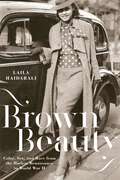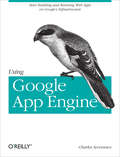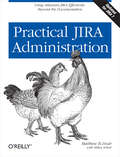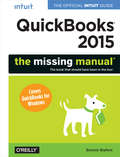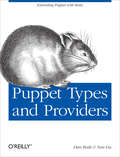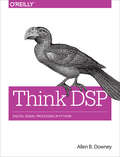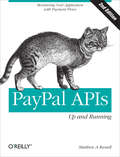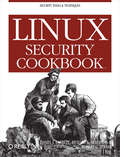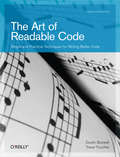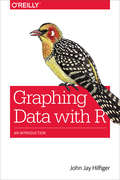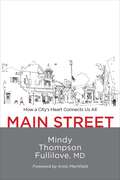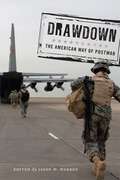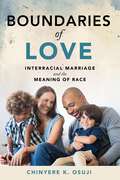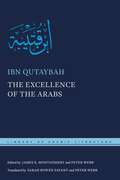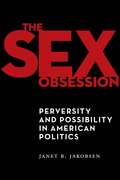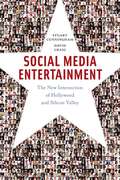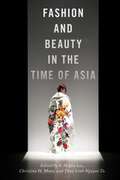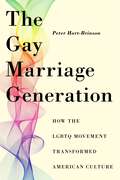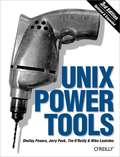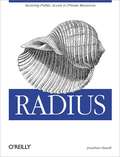- Table View
- List View
Brown Beauty: Color, Sex, and Race from the Harlem Renaissance to World War II
by Laila HaidaraliExamines how the media influenced ideas of race and beauty among African American women from the Harlem Renaissance to World War II. Between the Harlem Renaissance and the end of World War II, a complicated discourse emerged surrounding considerations of appearance of African American women and expressions of race, class, and status. Brown Beauty considers how the media created a beauty ideal for these women, emphasizing different representations and expressions of brown skin.Haidarali contends that the idea of brown as a “respectable shade” was carefully constructed through print and visual media in the interwar era. Throughout this period, brownness of skin came to be idealized as the real, representational, and respectable complexion of African American middle class women. Shades of brown became channels that facilitated discussions of race, class, and gender in a way that would develop lasting cultural effects for an ever-modernizing world. Building on an impressive range of visual and media sources—from newspapers, journals, magazines, and newsletters to commercial advertising—Haidarali locates a complex, and sometimes contradictory, set of cultural values at the core of representations of women, envisioned as “brown-skin.” She explores how brownness affected socially-mobile New Negro women in the urban environment during the interwar years, showing how the majority of messages on brownness were directed at an aspirant middle-class. By tracing brown’s changing meanings across this period, and showing how a visual language of brown grew into a dynamic racial shorthand used to denote modern African American womanhood, Brown Beauty demonstrates the myriad values and judgments, compromises and contradictions involved in the social evaluation of women. This book is an eye-opening account of the intense dynamics between racial identity and the influence mass media has on what, and who we consider beautiful.
Deviant Matter: Ferment, Intoxicants, Jelly, Rot (Sexual Cultures)
by Kyla Wazana TompkinsHow deviant materials figure resistanceYeast ferments, gelatin jiggles, drugs and alcohol froth and bubble, and flesh from animals and plants actively molds and rots. These materials morph through multiple states and phases, and their movement is imbued with a liveliness that is suggestive of volition.Deviant Matter examines four aesthetic and material categories— gelatinousness, fermentation, putrefaction, and intoxication—to theorize how the modern state seeks to manage deviant populations across multiple scales, from the level of the single cell up to the affective and aesthetic imperatives of the state and its bureaucratic projects. Kyla Wazana Tompkins deploys a new materialist engagement with the history of race and queer life, making an argument for queer of color method as political and disciplinary critique. Deviant Matter delves into a vast archive that includes nineteenth-century medical and scientific writing; newspaper comic strips and early film; the Food and Drug Act of 1906; the literature of Martin Delany, Louisa May Alcott and Herman Melville; and twenty-first century queer minoritarian video, installation, and performance art.Drawing from the genealogy of Black feminist and queer of color critique, in Deviant Matter rot, jelly, ferment and intoxicating materials serve as figures for thinking about how matter, art, politics, and affect can be read across multiple scales, ranging from the intimate and molecular everyday to the vast print production and inner workings of the state. Tompkins demonstrates that we are moved by our encounters with the materials in Deviant Matter, producing feelings and sensations that she links to a system of social value where these sensations come to be understood as productive, exciting, disgusting, intoxicating, or even hallucinatory. Moving through multiple states and phase changes, falling apart and reforming again, ferment, rot, intoxicants and jelly energize and choreograph both themselves and human behavior. At the same time, these materialities come to signify exactly those populations whose energy escapes the extractive efforts of capitalism and the state.
Testable JavaScript: Ensuring Reliable Code
by Mark Ethan TrostlerOne skill that’s essential for any professional JavaScript developer is the ability to write testable code. This book shows you what writing and maintaining testable JavaScript for the client- or server-side actually entails, whether you’re creating a new application or rewriting legacy code.From methods to reduce code complexity to unit testing, code coverage, debugging, and automation, you’ll learn a holistic approach for writing JavaScript code that you and your colleagues can easily fix and maintain going forward. Testing JavaScript code is complicated. This book helps experienced JavaScript developers simply the process considerably.Get an overview of Agile, test-driven development, and behavior-driven developmentUse patterns from static languages and standards-based JavaScript to reduce code complexityLearn the advantages of event-based architectures, including modularity, loose coupling, and reusabilityExplore tools for writing and running unit tests at the functional and application levelGenerate code coverage to measure the scope and effectiveness of your testsConduct integration, performance, and load testing, using Selenium or CasperJSUse tools for in-browser, Node.js, mobile, and production debuggingUnderstand what, when, and how to automate your development processes
Using Google App Engine: Building Web Applications
by Charles SeveranceBuild exciting, scalable web applications quickly and confidently using Google App Engine and this book, even if you have little or no experience in programming or web development. App Engine is perhaps the most appealing web technology to appear in the last year, providing an easy-to-use application framework with basic web tools. While Google's own tutorial assumes significant experience, Using Google App Engine will help anyone get started with this platform. By the end of this book, you'll know how to build complete, interactive applications and deploy them to the cloud using the same servers that power Google applications. With this book, you will:Get an overview of the technologies necessary to use Google App EngineLearn how to use Python, HTML, Cascading Style Sheets (CSS), HTTP, and DataStore, App Engine's databaseGrasp the technical aspects necessary to create sophisticated, dynamic web applicationsUnderstand what's required to deploy your applicationsUsing Google App Engine is also an excellent resource for experienced programmers who want to acquire working knowledge of web technologies. Building web applications used to be for experts only, but with Google App Engine-and this book-anyone can create a dynamic web presence.
Practical JIRA Administration: Using JIRA Effectively: Beyond the Documentation
by Matthew B. DoarIf you're familiar with JIRA for issue tracking, bug tracking, and other uses, you know it can sometimes be tricky to set up and manage. In this concise book, software toolsmith Matt Doar clarifies some of the more confusing aspects by answering difficult and frequently asked questions about JIRA administration.Practical JIRA Administration shows you how JIRA is intended to be used, making it an ideal supplement to the extensive documentation already available. The book’s chapters are loosely connected, so you can go straight to the information that best serves your needs.Understand the difference between JIRA groups and JIRA project rolesDiscover what JIRA schemes do, and learn how to maintain themUse a consistent configuration approach to help you use JIRA as a platformCreate a workflow from scratchAdd, modify, and deactivate usersPrepare for a JIRA upgrade, and troubleshoot if necessaryGet remote access to JIRA via email, SQL, REST, and other methods
QuickBooks 2015: The Official Intuit Guide to QuickBooks 2015
by Bonnie BiaforeHow can you make your bookkeeping workflow smoother and faster? Simple. With this Missing Manual, you’re in control: you get step-by-step instructions on how and when to use specific features, along with basic bookkeeping and accounting advice to guide you through the learning process. Discover new and improved features like the Insights dashboard and easy report commenting. You’ll soon see why this book is the Official Intuit Guide to QuickBooks 2015.The important stuff you need to know:Get started fast. Quickly set up accounts, customers, jobs, and invoice items.Follow the money. Track everything from billable and unbillable time and expenses to income and profit.Keep your company financially fit. Examine budgets and actual spending, income, inventory, assets, and liabilities.Gain insights. Open a new dashboard that highlights your company’s financial activity and status the moment you log in.Spend less time on bookkeeping. Create and reuse bills, invoices, sales receipts, and timesheets.Find key info. Use QuickBooks’ Search and Find features, as well as the Vendor, Customer, Inventory, and Employee Centers.
Puppet Types and Providers: Extending Puppet with Ruby
by Nan Liu Dan BodePuppet’s true power exists in the simple resource model it uses to manage the state of complex operating systems. This concise guide shows you how to extend that model and implement custom functionality on top of Puppet by working with the type and provider APIs.Two experts from Puppet Labs explain the concepts behind these APIs, and provide instructions and examples to help you write your own fully functional types and providers. You’ll also delve into Puppet’s source code to get a better understanding of how types and providers are implemented internally. If you’re familiar with basic Puppet concepts, you’re ready to get started.Learn the fundamental concepts behind resources, and become familiar with the structure of Puppet’s Resource ModelDiscover how the type API is used to create new resource types that Puppet can manageUnderstand how providers interact with the system to achieve the desired state of a declared resourceExplore advanced features to get a more complete understanding of how Puppet worksSimplify the troubleshooting process when developing types and providers
Think DSP: Digital Signal Processing in Python
by Allen B. DowneyIf you understand basic mathematics and know how to program with Python, you’re ready to dive into signal processing. While most resources start with theory to teach this complex subject, this practical book introduces techniques by showing you how they’re applied in the real world. In the first chapter alone, you’ll be able to decompose a sound into its harmonics, modify the harmonics, and generate new sounds.Author Allen Downey explains techniques such as spectral decomposition, filtering, convolution, and the Fast Fourier Transform. This book also provides exercises and code examples to help you understand the material.You’ll explore:Periodic signals and their spectrumsHarmonic structure of simple waveformsChirps and other sounds whose spectrum changes over timeNoise signals and natural sources of noiseThe autocorrelation function for estimating pitchThe discrete cosine transform (DCT) for compressionThe Fast Fourier Transform for spectral analysisRelating operations in time to filters in the frequency domainLinear time-invariant (LTI) system theoryAmplitude modulation (AM) used in radioOther books in this series include Think Stats and Think Bayes, also by Allen Downey.
PayPal APIs: Monetizing Your Application with Payment Flows
by Matthew A. RussellIf your web application’s success depends on how quickly and easily users can make transactions, PayPal APIs provide effective solutions you can’t afford to overlook. This concise book takes you hands-on through several options to help you determine the best choice for your situation, whether you’re collecting money via websites or mobile apps for products and services, donations, or anything else.In each chapter, you’ll work with a different PayPal API by integrating it into the book’s sample application, using Python and the Google App Engine framework. This expanded edition introduces two new options: Express Checkout for Digital Goods and Instant Payment Notifications, complete with sample project code. By the end of this book, you’ll understand how to take full advantage of PayPal and its powerful features.Learn PayPal API basics, and get an introduction to Google App EngineExplore the Express Checkout option, and understand what distinguishes it from other generic workflowsTailor Express Checkout for electronic documents, videos, and other “in app” digital purchasesApply the Adaptive Payments option for transactions that involve multiple recipientsEmbed the payment process into your site with no mention of PayPal, using Website Payments ProUse the Instant Payment Notifications you receive as triggers to take follow-up action
Linux Security Cookbook: Security Tools & Techniques
by Daniel J. Barrett Robert G. Byrnes Richard E. SilvermanComputer security is an ongoing process, a relentless contest between system administrators and intruders. A good administrator needs to stay one step ahead of any adversaries, which often involves a continuing process of education. If you're grounded in the basics of security, however, you won't necessarily want a complete treatise on the subject each time you pick up a book. Sometimes you want to get straight to the point. That's exactly what the new Linux Security Cookbook does. Rather than provide a total security solution for Linux computers, the authors present a series of easy-to-follow recipes--short, focused pieces of code that administrators can use to improve security and perform common tasks securely.The Linux Security Cookbook includes real solutions to a wide range of targeted problems, such as sending encrypted email within Emacs, restricting access to network services at particular times of day, firewalling a webserver, preventing IP spoofing, setting up key-based SSH authentication, and much more. With over 150 ready-to-use scripts and configuration files, this unique book helps administrators secure their systems without having to look up specific syntax. The book begins with recipes devised to establish a secure system, then moves on to secure day-to-day practices, and concludes with techniques to help your system stay secure.Some of the "recipes" you'll find in this book are:Controlling access to your system from firewalls down to individual services, using iptables, ipchains, xinetd, inetd, and moreMonitoring your network with tcpdump, dsniff, netstat, and other toolsProtecting network connections with Secure Shell (SSH) and stunnelSafeguarding email sessions with Secure Sockets Layer (SSL)Encrypting files and email messages with GnuPGProbing your own security with password crackers, nmap, and handy scriptsThis cookbook's proven techniques are derived from hard-won experience. Whether you're responsible for security on a home Linux system or for a large corporation, or somewhere in between, you'll find valuable, to-the-point, practical recipes for dealing with everyday security issues. This book is a system saver.
The Art of Readable Code: Simple and Practical Techniques for Writing Better Code (O'reilly Ser.)
by Dustin Boswell Trevor FoucherAs programmers, we’ve all seen source code that’s so ugly and buggy it makes our brain ache. Over the past five years, authors Dustin Boswell and Trevor Foucher have analyzed hundreds of examples of "bad code" (much of it their own) to determine why they’re bad and how they could be improved. Their conclusion? You need to write code that minimizes the time it would take someone else to understand it—even if that someone else is you.This book focuses on basic principles and practical techniques you can apply every time you write code. Using easy-to-digest code examples from different languages, each chapter dives into a different aspect of coding, and demonstrates how you can make your code easy to understand.Simplify naming, commenting, and formatting with tips that apply to every line of codeRefine your program’s loops, logic, and variables to reduce complexity and confusionAttack problems at the function level, such as reorganizing blocks of code to do one task at a timeWrite effective test code that is thorough and concise—as well as readable"Being aware of how the code you create affects those who look at it later is an important part of developing software. The authors did a great job in taking you through the different aspects of this challenge, explaining the details with instructive examples."—Michael Hunger, passionate Software Developer
Graphing Data with R: An Introduction
by John Jay HilfigerIt’s much easier to grasp complex data relationships with a graph than by scanning numbers in a spreadsheet. This introductory guide shows you how to use the R language to create a variety of useful graphs for visualizing and analyzing complex data for science, business, media, and many other fields. You’ll learn methods for highlighting important relationships and trends, reducing data to simpler forms, and emphasizing key numbers at a glance.Anyone who wants to analyze data will find something useful here—even if you don’t have a background in mathematics, statistics, or computer programming. If you want to examine data related to your work, this book is the ideal way to start.Get started with R by learning basic commandsBuild single variable graphs, such as dot and pie charts, box plots, and histogramsExplore the relationship between two quantitative variables with scatter plots, high-density plots, and other techniquesUse scatterplot matrices, 3D plots, clustering, heat maps, and other graphs to visualize relationships among three or more variables
Main Street: How a City's Heart Connects Us All
by Mindy Thompson FulliloveMindy Thompson Fullilove traverses the central thoroughfares of our cities to uncover the ways they bring together our communitiesAfter an 11-year study of Main Streets in 178 cities and 14 countries, Fullilove discovered the power of city centers to “help us name and solve our problems.” In an era of compounding crises including racial injustice, climate change, and COVID-19, the ability to rely on the power of community is more important than ever. However, Fullilove describes how a pattern of disinvestment in inner-city neighborhoods has left Main Streets across the U.S. in disrepair, weakening our cities and leaving us vulnerable to catastrophe.In the face of urban renewal programs built in response to a supposed lack of “personal responsibility,” Fullilove offers “a different story, that of a series of forced displacements that had devastating effects on inner-city communities. Through that lens, we can appreciate the strength of segregated communities that managed to temper the ravages of racism through the Jim Crow era, and build political power and many kinds of wealth. . . . Only a very well-integrated, powerful community—one with deep spiritual principles—could have accomplished such a feat.” This is the power she hopes we will find again.Throughout Main Street, readers glimpse strong, vibrant communities who have conquered a variety of disasters, from the near loss of a beloved local business to the devastation of a hurricane. Using case studies to illustrate her findings, Fullilove turns our eyes to the cracks in city centers, the parts of the city that tend to be avoided or ignored. Providing a framework for those who wish to see their communities revitalized, Fullilove’s Main Street encourages us all to look both inward and outward to find the assets that already exist to create meaningful change.
Drawdown: The American Way of Postwar (Warfare and Culture #8)
by Jason W. WarrenAnalyzes the cultural attitudes, political decisions, and institutions surrounding the maintenance of armed forces throughout American history While traditionally, Americans view expensive military structure as a poor investment and a threat to liberty, they also require a guarantee of that very freedom, necessitating the employment of armed forces. Beginning with the seventeenth-century wars of the English colonies, Americans typically increased their military capabilities at the beginning of conflicts only to decrease them at the apparent conclusion of hostilities. In Drawdown: The American Way of Postwar, a stellar team of military historians argue that the United States sometimes managed effective drawdowns, sowing the seeds of future victory that Americans eventually reaped. Yet at other times, the drawing down of military capabilities undermined our readiness and flexibility, leading to more costly wars and perhaps defeat. The political choice to reduce military capabilities is influenced by Anglo-American pecuniary decisions and traditional fears of government oppression, and it has been haphazard at best throughout American history. These two factors form the basic American “liberty dilemma,” the vexed relationship between the nation and its military apparatuses from the founding of the first colonies through to present times. With the termination of large-scale operations in Iraq and the winnowing of forces in Afghanistan, the United States military once again faces a significant drawdown in standing force structure and capabilities. The political and military debate currently raging around how best to affect this force reduction continues to lack a proper historical perspective. This volume aspires to inform this dialogue. Not a traditional military history, Drawdown analyzes cultural attitudes, political decisions, and institutions surrounding the maintenance of armed forces.
Boundaries of Love: Interracial Marriage and the Meaning of Race
by Chinyere K. OsujiHow interracial couples in Brazil and the US navigate racial boundaries How do people understand and navigate being married to a person of a different race? Based on individual interviews with forty-seven black-white couples in two large, multicultural cities—Los Angeles and Rio de Janeiro—Boundaries of Love explores how partners in these relationships ultimately reproduce, negotiate, and challenge the “us” versus “them” mentality of ethno-racial boundaries.By centering marriage, Chinyere Osuji reveals the family as a primary site for understanding the social construction of race. She challenges the naive but widespread belief that interracial couples and their children provide an antidote to racism in the twenty-first century, instead highlighting the complexities and contradictions of these relationships. Featuring black husbands with white wives as well as black wives with white husbands, Boundaries of Love sheds light on the role of gender in navigating life married to a person of a different color.Osuji compares black-white couples in Brazil and the United States, the two most populous post–slavery societies in the Western hemisphere. These settings, she argues, reveal the impact of contemporary race mixture on racial hierarchies and racial ideologies, both old and new.
The Excellence of the Arabs (Library of Arabic Literature #39)
by Ibn QutaybahThe Excellence of the Arabs is a spirited defense of Arab identity—its merits, values, and origins—at a time of political unrest and fragmentation, written by one of the most important scholars of the early Abbasid era.In the cosmopolitan milieu of Baghdad, the social prestige attached to claims of being Arab had begun to decline. Although his own family originally hailed from Merv in the east, Ibn Qutaybah locks horns with those members of his society who belittled Arabness and vaunted the glories of Persian heritage and culture. Instead, he upholds the status of Arabs and their heritage in the face of criticism and uncertainty.The Excellence of the Arabs is in two parts. In the first, Arab Preeminence, which takes the form of an extended argument for Arab privilege, Ibn Qutaybah accuses his opponents of blasphemous envy. In the second, The Excellence of Arab Learning, he describes the fields of knowledge in which he believed pre-Islamic Arabians excelled, including knowledge of the stars, divination, horse husbandry, and poetry. And by incorporating extensive excerpts from the poetic heritage—“the archive of the Arabs”—Ibn Qutaybah aims to demonstrate that poetry is itself sufficient corroboration of Arab superiority.Eloquent and forceful, The Excellence of the Arabs addresses a central question at a time of great social flux at the dawn of classical Muslim civilization: what did it mean to be Arab?A bilingual Arabic-English edition.
The Sex Obsession: Perversity and Possibility in American Politics (Sexual Cultures #55)
by Janet R. JakobsenFinalist, 2021 Lambda Literary Award in LGBTQ StudiesOffers a way to undo the inextricable American knot of sex, politics, religion, and powerAmerican politics are obsessed with sex. Before the first televised presidential debate, John F. Kennedy trailed Richard Nixon in the polls. As Americans tuned in, however, they found Kennedy a younger, more vivacious, and more attractive choice than Nixon. Sexier. The political significance of Kennedy’s telegenic sex appeal is now widely accepted – but taking sexual politics seriously is not. Janet R. Jakobsen examines how, for the last several decades, gender and sexuality have reappeared time and again at the center of political life, marked by a series of widely recognized issues and movements – women’s liberation and gay liberation in the 1960s and ’70s, the AIDS crisis and ACT UP in the ‘80s and ’90s, welfare and immigration “reform” in the ‘90s, wars claiming to “save women” in the 2000s, and battles over health care in the 2010s, to recent demands for reproductive justice, trans liberation, and the explosive exposures of #MeToo.Religion has been wound up in these political struggles, and blamed for not a little of the resistance to meaningful change in America political life. Jakobsen acknowledges that religion is a force to be reckoned with, but decisively breaks with the common sense that religion and sex are the fixed binary of American political life. She instead follows the kaleidoscopic ways in which sexual politics are embedded in social relations of all kinds – not only the intimate relations of love and family with which gender and sex are routinely associated, but also secularism, freedom, race, disability, capitalism, nation and state, housing and the environment.In the midst of these obsessions, Jakobsen’s promiscuous ethical imagination guides us forward. Drawing on examples from collaborative projects among activists, academics and artists, Jakobsen shows that sexual politics can contribute to building justice from the ground up. Gender and sexual relations are practices through which values emerge and communities are made. Sex and desire, gender and embodiment emerge as bases of ethical possibility, breaking political stalemate and opening new possibility.
In the Camp of Angels of Freedom: What Does It Mean to Be Educated?
by Arlene GoldbardAn autodidact explores issues of education itself through essays and personal portraits of the key minds who influenced herWhat does it mean to be educated? Through her evocative paintings and narrative, author Arlene Goldbard has portrayed eleven people whose work most influenced her—what she calls a camp of angels. She sees each as a brave messenger of love and freedom for a society that badly needs “uncolonized minds.” Goldbard describes how the learning from each changed the course of her life in essays that offer generative moments of a life in art and social change. She also reveals ways a dominant society tried to put a first-generation American from a socially marginal family in her place—and failed. Readers will learn about the author’s own self education, issues of formal higher education and its discontents, and the damage done by a society that prizes profits over people. Goldbard asks readers to consider the impact of credentialism on U.S. society and what we can do to set it right.
Social Media Entertainment: The New Intersection of Hollywood and Silicon Valley (Postmillennial Pop #7)
by Stuart Cunningham David CraigWinner, 2020 Outstanding Book Award, given by the International Communication AssociationHonorable Mention, 2020 Nancy Baym Book Award, given by the Association of Internet ResearchersHow the transformation of social media platforms and user-experience have redefined the entertainment industryIn a little over a decade, competing social media platforms, including YouTube, Facebook, Twitter, Instagram, and Snapchat, have given rise to a new creative industry: social media entertainment. Operating at the intersection of the entertainment and interactivity, communication and content industries, social media entertainment creators have harnessed these platforms to generate new kinds of content separate from the century-long model of intellectual property control in the traditional entertainment industry. Social media entertainment has expanded rapidly and the traditional entertainment industry has been forced to cede significant power and influence to content creators, their fans, and subscribers. Digital platforms have created a natural market for embedded advertising, changing the worlds of marketing and communication in their wake. Combined, these factors have produced new, radically shifting demands on the entertainment industry, posing new challenges for screen regimes, media scholars, industry professionals, content creators, and audiences alike.Stuart Cunningham and David Craig chronicle the rise of social media entertainment and its impact on media consumption and production. A massive, industry-defining study with insight from over 100 industry insiders, Social Media Entertainment explores the latest transformations in the entertainment industry in this time of digital disruption.
Fashion and Beauty in the Time of Asia (NYU Series in Social and Cultural Analysis #6)
by S. Heijin Lee, Christina H. Moon, and Thuy Linh Nguyen TuHow transnational modernity is taking shape in and in relation to AsiaFashion and Beauty in the Time of Asia considers the role of bodily aesthetics in the shaping of Asian modernities and the formation of the so-called “Asian Century.” S. Heijin Lee, Christina H. Moon, and Thuy Linh Nguyen Tu train our eyes on sites as far-flung, varied, and intimate as Guangzhou and Los Angeles, Saigon and Seoul, New York and Toronto. They map the transregional connections, ever-evolving aspirations and sensibilities, and new worlds and life paths forged through engagements with fashion and beauty.Contributors consider American influence on plastic surgery in Korea, Vietnamese debates about “the fashionable,” and the costs and commitments demanded of those who make and wear fast fashion, from Chinese garment workers to Nepalese nail technicians in New York who are mandated to dress "fashionably." In doing so, this interdisciplinary anthology moves beyond common characterizations of Asians and the Asian diaspora as simply abject laborers or frenzied consumers, analyzing who the modern Asian subject is now: what they wear and how they work, move, eat, and shop.
The Gay Marriage Generation: How the LGBTQ Movement Transformed American Culture
by Peter Hart-BrinsonThe generational and social thinking changes that caused an unprecedented shift toward support for gay marriageHow did gay marriage—something unimaginable two decades ago—come to feel inevitable to even its staunchest opponents? Drawing on over 95 interviews with two generations of Americans, as well as historical analysis and public opinion data, Peter Hart-Brinson argues that a fundamental shift in our understanding of homosexuality sparked the generational change that fueled gay marriage’s unprecedented rise. Hart-Brinson shows that the LGBTQ movement’s evolution and tactical responses to oppression caused Americans to reimagine what it means to be gay and what gay marriage would mean to society at large. While older generations grew up imagining gays and lesbians in terms of their behavior, younger generations came to understand them in terms of their identity. Over time, as the older generation and their ideas slowly passed away, they were replaced by a new generational culture that brought gay marriage to all fifty states.Through revealing interviews, Hart-Brinson explores how different age groups embrace, resist, and create society’s changing ideas about gay marriage. Religion, race, contact with gay people, and the power of love are all topics that weave in and out of these fascinating accounts, sometimes influencing opinions in surprising ways. The book captures a wide range of voices from diverse social backgrounds at a critical moment in the culture wars, right before the turn of the tide. The story of gay marriage’s rapid ascent offers profound insights about how the continuous remaking of the population through birth and death, mixed with our personal, biographical experiences of our shared history and culture, produces a society that is continually in flux and constantly reinventing itself anew.An intimate portrait of social change with national implications, The Gay Marriage Generation is a significant contribution to our understanding of what causes generational change and how gay marriage became the reality in the United States.
The Backroom Boy: Andrew Malengeni's Story
by Mandla MathebulaThe Backroom Boy opens dramatically in China, 1962. Andrew Mlangeni is one of a small select group undergoing military training there. The unannounced visitor is Mao Tse-Tung or Chairman Mao as he was known, Chairman of the Communist Party of China.Mlangeni was selected as one of the first-ever six members who received military training in China before the formation of Umkhonto we Sizwe. He seems to have been chosen because he was a dedicated, intelligent and dependable operative, rather than a leader. Even after his release after 25 years on Robben Island, Mlangeni was not given a senior position in the post-apartheid democratic government. ‘I was always the backroom boy,’ says Andrew Mlangeni about himself.Andrew Mlangeni, is a struggle stalwart, Rivonia Trialist, and Robben Island prisoner 467/64 who was next door inmate to Nelson Mandela’s acclaimed 466/64 prison number. Released after 26 years of incarceration, he served as Member of Parliament, and is Chairman of the ANC’s Integrity Commission and Founder of the June and Andrew Mlangeni Foundation. With the passing of Ahmed Kathrada (March 2017), Mlangeni (91) is one of only two Rivonia Trialist still alive with Denis Goldberg.While still at school, Andrew Mlangeni joined the Communist Party of South Africa and also the ANC Youth League. These were the organisations that shaped his values. Decades of resourceful activism were to lead to his arrest and life sentence in the Rivonia trial. Mlangeni’s lifelong commitment to the struggle for liberation reverberates with other biographies and memoirs of leading figures, such as Rusty Bernstein’s Memory Against Forgetting and Albie Sachs’ We, the People: Insights of an Activist Judge. This story of an ANC elder is a well-researched historical record overlaid with intensely personal refl ections which intersect with the political narrative. Above all, it is one man’s story, set in the maelstrom of the liberation struggle.This biographical project has been developed for, and published in conjunction with, the June and Andrew Mlangeni Foundation.
Learning SQL
by Alan BeaulieuSQL (Structured Query Language) is a standard programming language for generating, manipulating, and retrieving information from a relational database. If you're working with a relational database--whether you're writing applications, performing administrative tasks, or generating reports--you need to know how to interact with your data. Even if you are using a tool that generates SQL for you, such as a reporting tool, there may still be cases where you need to bypass the automatic generation feature and write your own SQL statements.To help you attain this fundamental SQL knowledge, look to Learning SQL, an introductory guide to SQL, designed primarily for developers just cutting their teeth on the language. Learning SQL moves you quickly through the basics and then on to some of the more commonly used advanced features. Among the topics discussed:The history of the computerized databaseSQL Data Statements--those used to create, manipulate, and retrieve data stored in your database; example statements include select, update, insert, and deleteSQL Schema Statements--those used to create database objects, such as tables, indexes, and constraintsHow data sets can interact with queriesThe importance of subqueriesData conversion and manipulation via SQL's built-in functionsHow conditional logic can be used in Data StatementsBest of all, Learning SQL talks to you in a real-world manner, discussing various platform differences that you're likely to encounter and offering a series of chapter exercises that walk you through the learning process. Whenever possible, the book sticks to the features included in the ANSI SQL standards. This means you'll be able to apply what you learn to any of several different databases; the book covers MySQL, Microsoft SQL Server, and Oracle Database, but the features and syntax should apply just as well (perhaps with some tweaking) to IBM DB2, Sybase Adaptive Server, and PostgreSQL.Put the power and flexibility of SQL to work. With Learning SQL you can master this important skill and know that the SQL statements you write are indeed correct.
Unix Power Tools
by Shelley Powers Jerry Peek Tim O'Reilly Mike LoukidesWith the growing popularity of Linux and the advent of Darwin, Unix has metamorphosed into something new and exciting. No longer perceived as a difficult operating system, more and more users are discovering the advantages of Unix for the first time. But whether you are a newcomer or a Unix power user, you'll find yourself thumbing through the goldmine of information in the new edition of Unix Power Tools to add to your store of knowledge. Want to try something new? Check this book first, and you're sure to find a tip or trick that will prevent you from learning things the hard way.The latest edition of this best-selling favorite is loaded with advice about almost every aspect of Unix, covering all the new technologies that users need to know. In addition to vital information on Linux, Darwin, and BSD, Unix Power Tools 3rd Edition now offers more coverage of bash, zsh, and other new shells, along with discussions about modern utilities and applications. Several sections focus on security and Internet access. And there is a new chapter on access to Unix from Windows, addressing the heterogeneous nature of systems today. You'll also find expanded coverage of software installation and packaging, as well as basic information on Perl and Python.Unix Power Tools 3rd Edition is a browser's book...like a magazine that you don't read from start to finish, but leaf through repeatedly until you realize that you've read it all. Bursting with cross-references, interesting sidebars explore syntax or point out other directions for exploration, including relevant technical details that might not be immediately apparent. The book includes articles abstracted from other O'Reilly books, new information that highlights program tricks and gotchas, tips posted to the Net over the years, and other accumulated wisdom.Affectionately referred to by readers as "the" Unix book, UNIX Power Tools provides access to information every Unix user is going to need to know. It will help you think creatively about UNIX, and will help you get to the point where you can analyze your own problems. Your own solutions won't be far behind.
RADIUS: Securing Public Access to Private Resources
by Jonathan HassellThe subject of security never strays far from the minds of IT workers, for good reason. If there is a network with even just one connection to another network, it needs to be secured. RADIUS, or Remote Authentication Dial-In User Service, is a widely deployed protocol that enables companies to authenticate, authorize and account for remote users who want access to a system or service from a central network server. Originally developed for dial-up remote access, RADIUS is now used by virtual private network (VPN) servers, wireless access points, authenticating Ethernet switches, Digital Subscriber Line (DSL) access, and other network access types. Extensible, easy to implement, supported, and actively developed, RADIUS is currently the de facto standard for remote authentication.RADIUS provides a complete, detailed guide to the underpinnings of the RADIUS protocol, with particular emphasis on the utility of user accounting. Author Jonathan Hassell draws from his extensive experience in Internet service provider operations to bring practical suggestions and advice for implementing RADIUS. He also provides instructions for using an open-source variation called FreeRADIUS."RADIUS is an extensible protocol that enjoys the support of a wide range of vendors," says Jonathan Hassell. "Coupled with the amazing efforts of the open source development community to extend RADIUS's capabilities to other applications-Web, calling card security, physical device security, such as RSA's SecureID-RADIUS is possibly the best protocol with which to ensure only the people that need access to a resource indeed gain that access."This unique book covers RADIUS completely, from the history and theory of the architecture around which it was designed, to how the protocol and its ancillaries function on a day-to-day basis, to implementing RADIUS-based security in a variety of corporate and service provider environments. If you are an ISP owner or administrator, corporate IT professional responsible for maintaining mobile user connectivity, or a web presence provider responsible for providing multiple communications resources, you'll want this book to help you master this widely implemented but little understood protocol.
